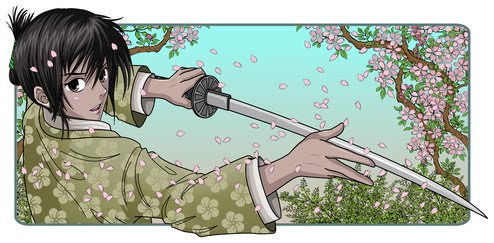I've been struggling to understand some aspects of the current fad in vampire fiction, including the rivalry with werewolves. Some things are easy to see, like the relationship of vampires and young love. Vampires have always been lovers, and especially seducers. The love that is practically indistinguishable from death is a marker for intensity. The whole bloodsucking thing is a transparent sexual allegory, including the bedroom eyes, the hickey, and the usual gender associations. In this case, the intensity of the passion is expressed by the lassitude of the participants. The bloodsucker is sleepy because he's on a blood-bender, and the victim because, well, she's lost a lot of blood. What about the stake, the cross and the aversion to garlic? These are all icons of parental disapproval. The garlic is her mother's cooking, perhaps even a figure of her as a mother. The cross is the burden of parental responsibility the lovers risk incurring. The stake? That's obviously the greater sexual potency of her father, in the face of which the young vampire's urge seems to shrivel up and die, finally.
But why must vampires and werewolves be enemies? They are, after all, both unnatural monsters. So, what's the problem? Perhaps it's that the vampire is an image of dissolute desire, the aesthete, the rake. But your werewolf is more about ravenous desire, about eating, not drinking, about hunger rather than wan yearning. The werewolf seeks satiety in a feeding frenzy. In other words, he is indiscriminate in his desire. His is the desire that bears no scrutiny. This all leads to the conclusion that vampires hate werewolves because they think they are homosexuals. The vampire is a primal image of the narrowest form of homophobia.
Or maybe not. Perhaps I've completely misread this imagery. Let me know what you think.

I agree with you on your interpretation of the symbolism, however not the conclusion, as I do not think the dissolute desire vs. the ravenous desire must necessarily be the reason for conflict between the two monsters, though it isn’t a point to be completely overlooked. To consider an alternative, perhaps it is the circumstances of their respective existences as monsters that is the point of tension; static vs. dynamic. The vampire is always a vampire, regardless of time of day or month while the werewolf changes between human and non-human forms according to the cycles of the moon. This could very well be a reason for tension, or at least jealousy on the part of the vampires, however, why they wouldn't commiserate (or celebrate) for both being cursed together without tension is a question that could follow this interpretation. This interpretation could allow for gay vampires (and werewolves), plus the symbolism for the vampires could apply regardless of their sexual orientation.
ReplyDeleteActually, vampires weren't always lovers.
ReplyDeleteOriginally they were just mindless savages; the legends and lore of vampires being started when humans were infected with rabies by bats or wolves in eastern europe. The seduction aspect didn't really come in until Dracula was written.
Nor were werewoles always mindless savages, the oldest werewolf stories I was able to find belonged to an Asian tribe called the Xiong-nu who basically believed that they were werewolves. And then there's native american and Irish folklore.
Both the idea of the seductive vampire and the mindlessly vicious werewolf are relatively recent considering how long the legends have been around.
Hi, Eyeball Kid.
ReplyDeleteExcellent observation! You are so right. I was only thinking of vampires and werewolves in popular culture in the west. I'd love to know more about the older folklore. I'm guessing that certain images shaped those stories as well, even if they were different images.